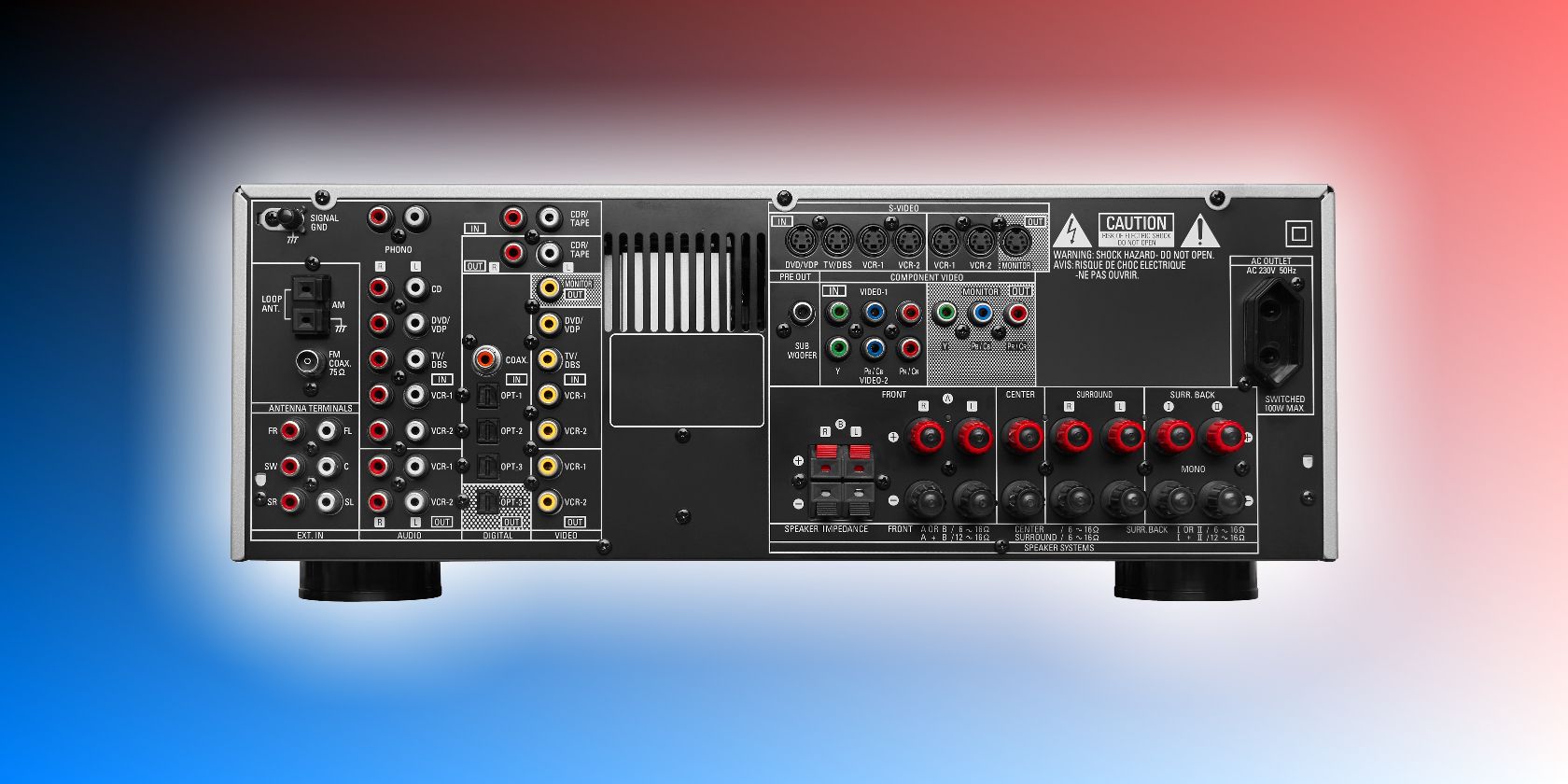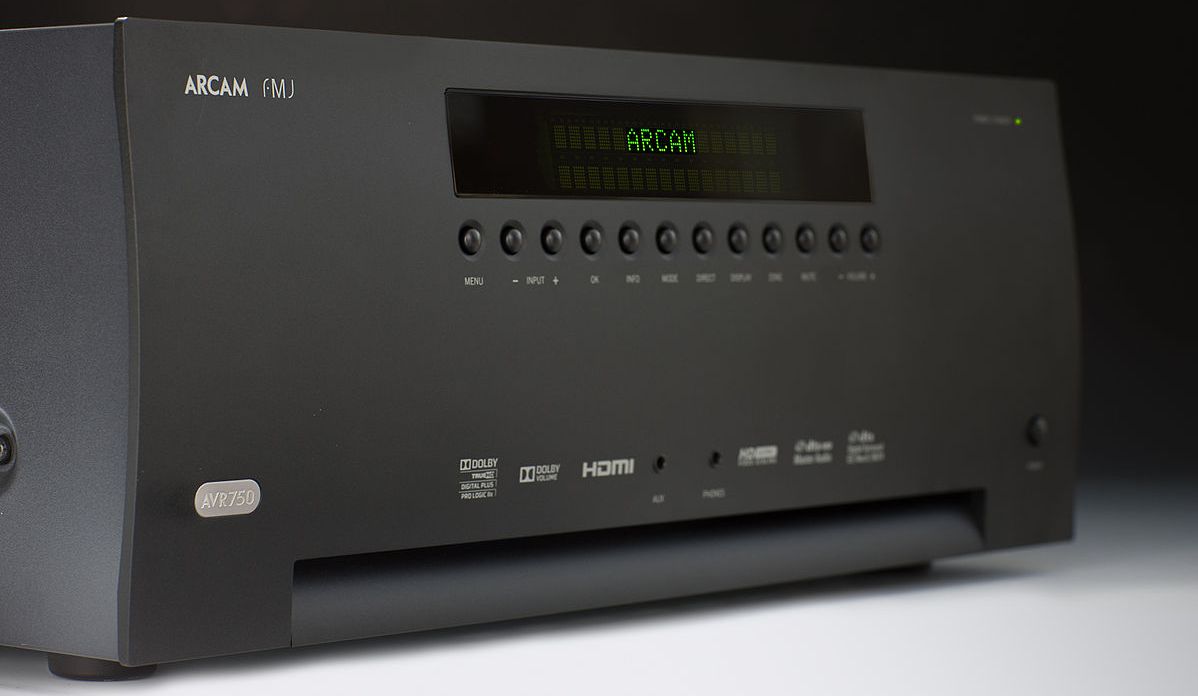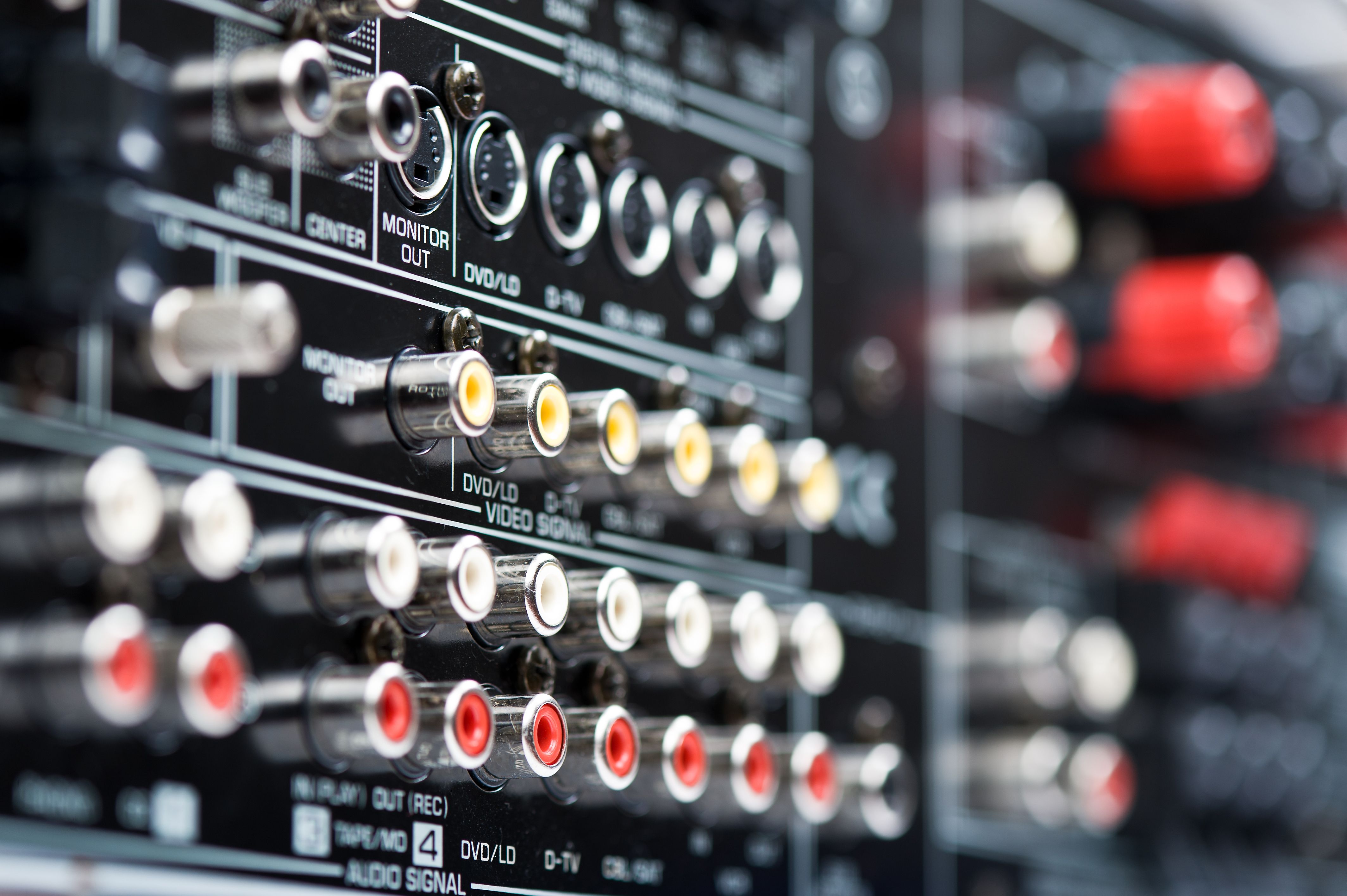An audio video receiver is an important part of any home theater system. It not only acts as an amplifier but also as an audio-video switching device. It plays a central role in what you can play and at what quality.
Like many home theater components, AV receivers aren't the easiest items to shop for. They have a wide range of specifications, and many will be unfamiliar if you've never purchased one before. If you'd like to buy an AV receiver, here's what to look for.
1. Channels
The number of channels on an AV receiver refers to how many speakers it can power. It's possible to play audio using only two speakers, but you'll probably want significantly more. Here are a few options and what they mean:
- 2 channels: Left and right speakers.
- 2.1 channels: Left, right, and a subwoofer.
- 3.1 channels: Left, right, a central speaker, and a subwoofer.
- 5.1 channels: This is the same as 3.1 but with two speakers added behind you. This is the minimum number of speakers required to enjoy surround sound.
- 7.1 channels: This is the same as 5.1 but with two speakers added to either side. This is recommended for larger rooms.
It's worth noting that, where affordable, you should purchase more channels than you expect to use. This allows you to add additional speakers at a later date without replacing your receiver.
2. Sound Codecs
Most AV receivers offer surround sound. This is achieved using codecs, with the most popular being Dolby Atmos and DTS:X. In terms of audio quality, there's very little difference between the two. But it's important to note that Dolby Atmos requires height speakers, whereas DTS:X does not. Because of this, unless you are using the receiver in a very large room, you should opt for DTS:X, which offers almost identical audio using fewer speakers.
3. Resolution and HDR
Video resolution has been increasing dramatically in recent years. 4K is becoming increasingly popular, and many manufacturers are now launching 8K televisions. If you own a high-resolution television, or you may purchase one in the future, it's important to purchase an AV receiver that supports high-resolution video.
You may also want to consider High Dynamic Range support. HDR is why many new televisions now offer such realistic color accuracy. There are three types, namely HDR10, Dolby Vision, and HLG. Many new AV receivers support all three.
4. Inputs and Outputs
Before purchasing an AV receiver, it's important to write down everything you want to connect to it. If you'd like to use the receiver for a long time, it's also worth considering additional components you may purchase in the future.
HDMI inputs are arguably the most important as they are used by cable boxes, Blu-ray players, etc. But you should also consider additional connections such as a phono input if you want to hook up a record player.
5. Power
Power is measured in watts. Power is important for audio quality, and it's not the same as volume. A high-wattage amplifier sounds better even at low volume levels. When deciding how much power you need, it's important to consider your speakers and the room they are in. The wattage per channel should be at least as high as the wattage per speaker. For example, 100 watts per channel is sufficient for most home theater systems.
6. Streaming
Due to the popularity of streaming services, many AV receivers now have them built in. This isn't a strict requirement for buying a receiver. If you want to use a service that isn't built in, you can send it to the receiver using Bluetooth. But if you want something convenient and ready to use the day you buy it, built-in streaming is worth shopping around for.
7. Room Equalization
Room equalization is an interesting feature that can significantly improve audio quality. Room equalization is designed to customize audio so that it is better suited to the environment. In other words, it takes account of the shape and size of a room and produces audio waves to match. It is available in most amplifiers over $1,000 and worth looking for if you plan on paying that much.
8. Wi-Fi and Bluetooth
Most AV receivers can be connected to a home network. This provides access to online streaming services and allows you to stream directly from any of your devices. Almost all AV receivers have an Ethernet port for this purpose but if you want something with fewer wires, look for a receiver with Wi-Fi and Bluetooth.
9. Voice/App Control
Most AV receivers have well-designed remotes that allow you to play whatever you want quickly. If you'd like something a little more sophisticated, many receivers also have their own app. This lets you control your home audio set up with your mobile instead. If you're a fan of voice control, it's worth noting that some AV receivers are also compatible with Alexa and Google Voice.
10. Multi-Room
If you have speakers in multiple rooms, you should look for an AV receiver with multi-room. This feature allows you to split the audio signal and stream media in multiple locations, such as a bedroom or dining room. It's important to note that this is typically achieved by using one of your surround sound channels. If you'd prefer not to do this, you can also purchase receivers that allow you to add additional amplifiers throughout the house.
How Much Should You Spend on an AV Receiver?
Like most pieces of audio equipment, the price of an AV receiver varies widely. You also get what you pay for, with more expensive products tending to have better quality audio and a much wider choice of features.
While many AV receivers are priced over $1,000, you can also spend $250 and get something suitable for most home theaters. In addition, provided it's paired with good speakers, the difference in audio quality won't be noticeable to most people.
However, if you want specific features or a high-end experience, you should be prepared for a higher price tag.




